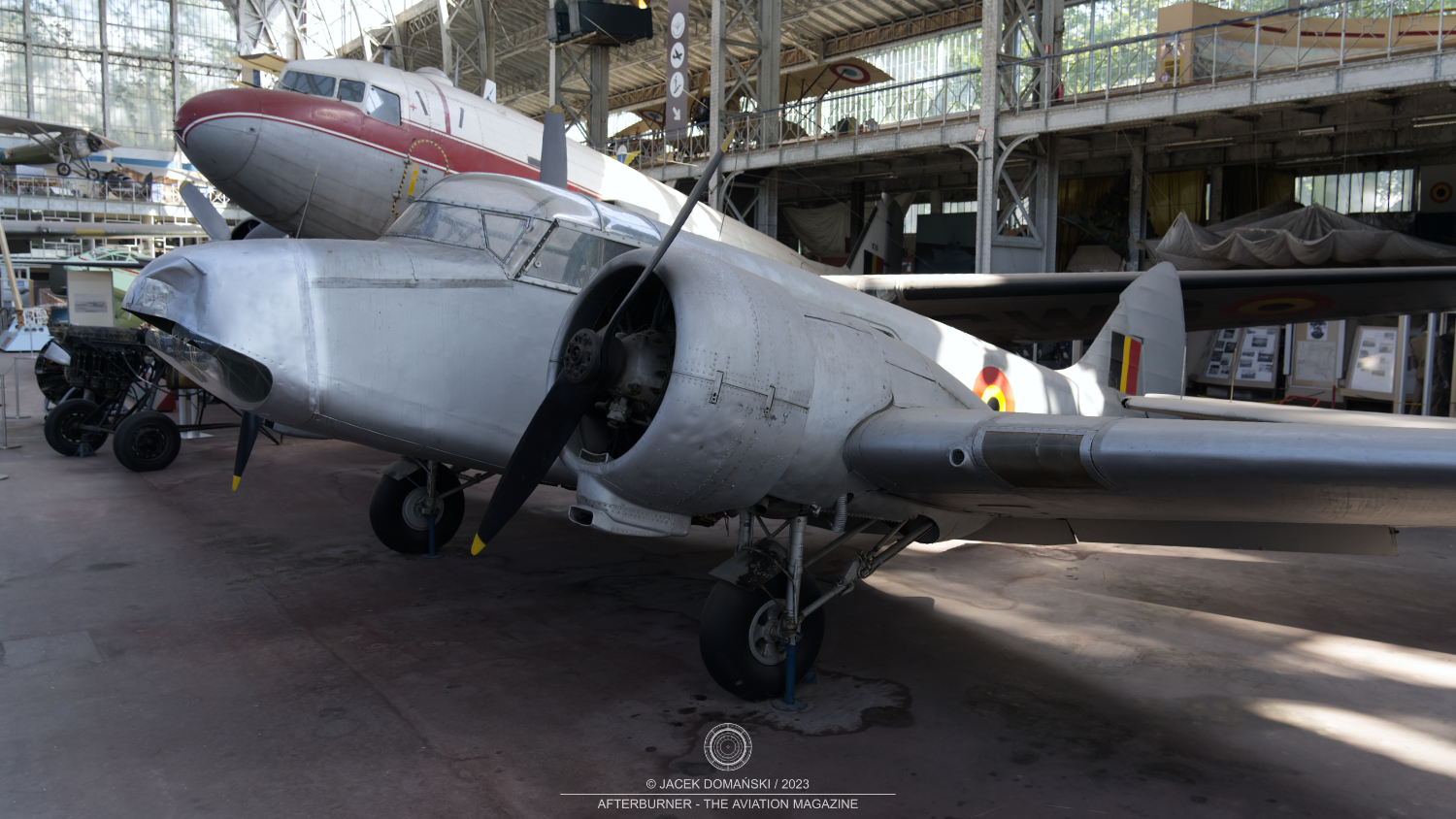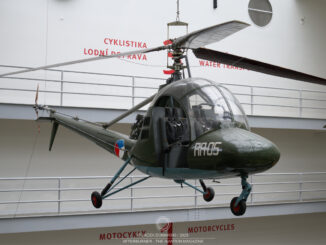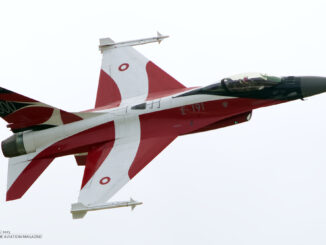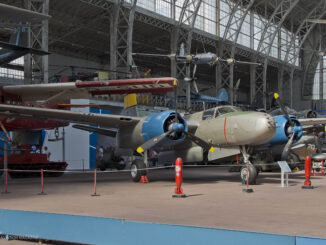 Airspeed Oxford Mk I (c/n PAC.936, O-16 of the Belgian Air Force, formerly MP455 of the Royal Air Force), exhibited at the Royal Museum of the Armed Forces and Military History, Brussels, September 2023.
Airspeed Oxford Mk I (c/n PAC.936, O-16 of the Belgian Air Force, formerly MP455 of the Royal Air Force), exhibited at the Royal Museum of the Armed Forces and Military History, Brussels, September 2023.
In 1936, the British Air Ministry issued Specification T.23/36, based on the earlier Operational Requirement 42, for a multi-role crew training aircraft. The requirement was responded by the Airspeed company which proposed a twin-engine, low-wing monoplane based on AS.6 Envoy passenger aircraft.
The Airspeed Envoy was developed in the early 1930s, as larger derivative of the single-engine light airliner, designated Courier. The Courier performed its maiden flight in April of 1933, followed by the Envoy in June of next year.
Interesting fact is that, being designed as the light airliner and civilian transport aircraft, the Airspeed Envoy quickly sparked interest not only from civilian operators but also from air forces. The aeroplane was acquired by China, Finland, Japan – where it was also manufactured under license as Mitsubishi Hinazuru – Spain and South Africa. Especially the aircraft for South Africa deserve special attention, as they were ordered both in military transport variant for the South African Air Force and in passenger version for the South African Airways. However, all of them could be easily converted into light bombers, hence receiving the nickname ´Convertible Envoy´.
In the light of impending war, and necessity to quickly boost the country´s military aviation, the British aviation authorities quickly approved the new aircraft proposed by the Airspeed company. Prototype of Oxford, as the aeroplane was officially designated, performed its maiden flight on 19th June 1937. Shortly after, the first order for two hundred aircraft was placed – one hundred of Mark I variant, equipped with gun turret, and one hundred of Mark II version, with dual controls.
The Oxford was a semi-monocoque, cantilever monoplane with a wooden tail and conventional landing gear. The aircraft was powered by two Armstrong Siddeley Cheetah X radial engines, each generating 350 hp, and was operated by a crew of three.
Due to extremely huge demand for the new training aircraft, production of the Oxford was also assigned to other aviation companies, such as de Havilland, Percival Aircraft and Standard Motors. Until July of 1945, when manufacturing of the aircraft was ceased, all those companies built a total of 8,751 examples of the Airspeed Oxford.
The aeroplane, nicknamed the ´Ox-box´, was mainly operated by British Commonwealth countries and their allies for multi-role training purposes, such as navigation, radio-operation, bombing and gunnery. In addition, the Oxfords were used for air ambulance service, communication tasks, anti-aircraft cooperation duties and even as light bombers. After the war, the British surplus aircraft were acquired by Belgium, Ceylon, Denmark, Greece, India, Israel, the Netherlands, Norway and Yugoslavia.
In most of the countries, the Oxford trainers remained operational to the late 1950s. After retirement, a few examples were converted to airliners, but most of the aeroplanes were just scrapped.
When the Belgian Air Force was re-established after the World War II, the country ordered thirty examples of the Airspeed Oxford from the Royal Air Force inventory. The aircraft were delivered in 1947 and used for training and liaison purposes. A few years later, the Belgian Air Force acquired another batch of some Oxford trainers, this time bought on the civilian market. Those aeroplanes were then deployed to operate in Belgian Congo.
The Belgian Oxfords remained in active service until 1960. Already in 1955, the country´s aviation authorities decided the wooden construction of the aircraft made it impossible to perform any overhaul to increase their service life. Therefore, particular aeroplanes were successfully retiring while received their flying hours limit.
In January of 1960, the aircraft carrying O-16 tail code was donated to the Royal Museum of the Armed Forces and Military History in Brussels, where it is being exhibited until today. All the other Belgian Oxfords were scrapped.
Only about a dozen examples of the Airspeed Oxford survived until today, despite more than eight thousand examples of the aeroplanes built. Regrettably, none of the surviving aircraft was preserved in airworthy condition.



